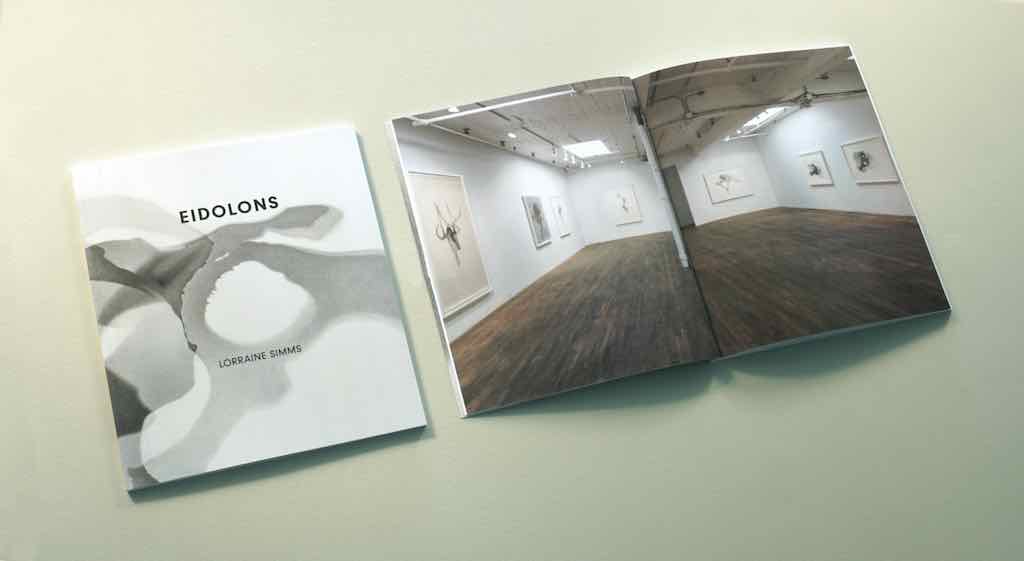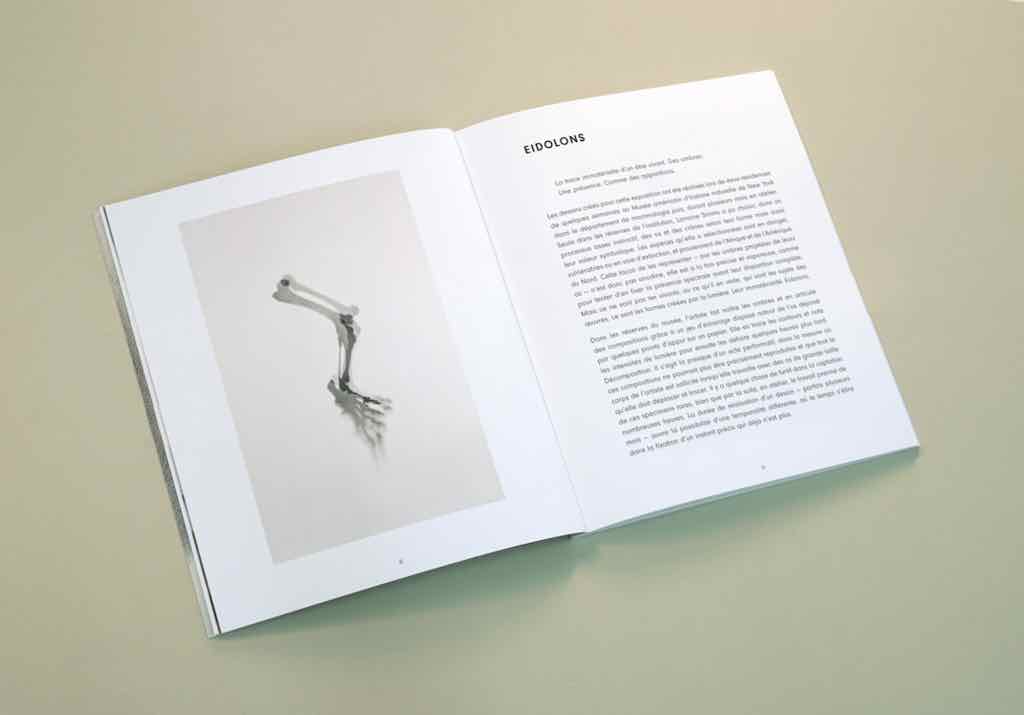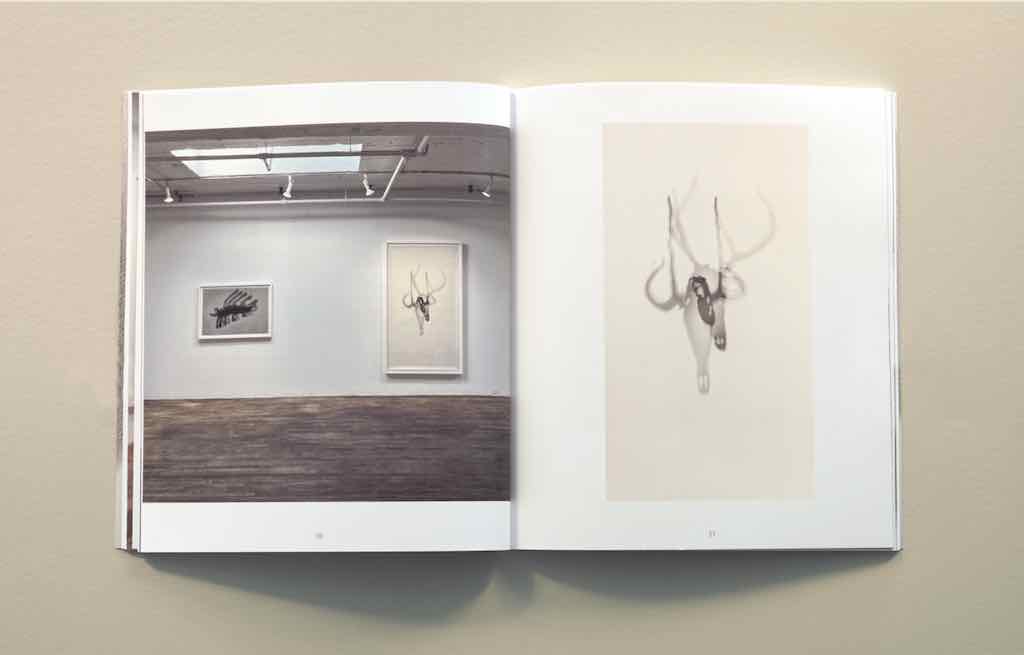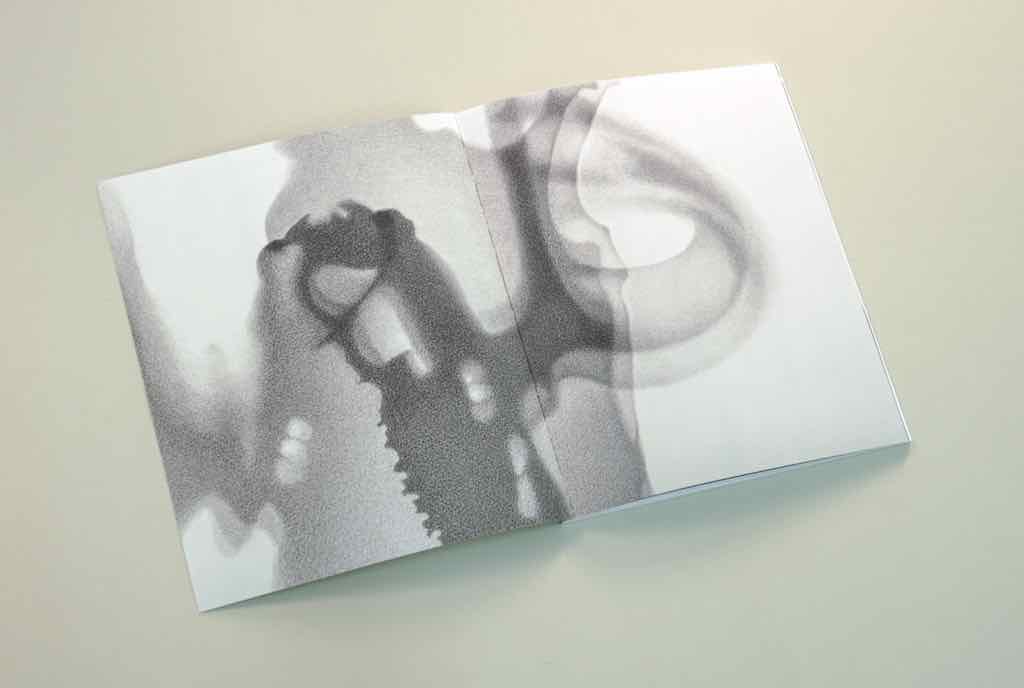Catherine Barnabé, Lorraine Simms and James Sutherland-Smith, Eidolons (Montréal : Lorraine Simms, 2022), 60 p., ill. (English and French)
Edited by the artist, this book documents the exhibition, presented at Oboro from November 5 to December 10, 2022, of drawings she produced during two residencies at the American Museum of Natural History in New York. The series consists of shadows of bones, skulls or skins of endangered or vulnerable animal species, artifacts from the Museum’s mammalogy collection. The catalog brings together contributions by various authors and visual documentation of the works, putting the whole into perspective.

This body of work has been the subject of other exhibitions previously reviewed in newspapers and magazines, as well as a portfolio publication (1). The specimens chosen by Simms belong to animals with a strong public appeal (Asian elephant, hippopotamus, tiger, polar bear, walrus, narwhal, right whale, minke whale, wolf, deer, elk, Arctic hare and bat). Simms’ approach is rooted in this popularity, and aims to raise awareness of the conservation movement for vulnerable species. In the statement of intent published in the book, the artist mentions that she has had little contact with these animals. In a way, she seeks to get closer to them as living beings, and bears witness to a paradoxical corps à corps in which remains represent a life of flesh and bone.

The artist focuses on the shadows cast by these remains, which artificial lighting helps to dramatize and multiply. This plastic choice further distances the image she depicts from real objects and bodies. The resulting drawing, anchored in the squaring of fleeting images, re-enacts the “museumization” of animals. The time Simms devotes to creating these drawings is clearly visible, as living beings are gradually transformed into artifacts. Through her commitment and meticulous work, she pays homage to species that may well become extinct. Their evocation refers to a present in dramatic mutation, inscribed in the long term. This situation is not without its “solastalgia” (distress in the face of current environmental change), and raises the question of our collective responsibility.
In the drawings, the bones or naturalized remains depicted are placed at the center of the composition. In this way, she adopts the arrangement of artifacts in display cases typical of museum displays. With their shades of gray and exposed paper fibers, the works present a real layout challenge. The sequence of general views of the exhibition, selected reproductions and details bears witness to the in-room experience, where each drawing is apprehended in proximity while at the same time becoming part of a larger collection, evident in panoramic vision. The species reproduced are clearly identified at the end of the book, and the quality of the photographs makes it easy to grasp the rendering of the drawings.

The catalog includes a reproduction of Catherine Barnabé’s text published in the booklet produced by Oboro for the exhibition. Inviting another author would have been useful to offer a different point of view on the work. Starting with the spectral figure referred to in Eidolons, the title of his text and of the exhibition, Barnabé describes in detail the stages of production of the drawings, the multiple temporalities that underlie them and the evanescent visibility, between appearance and disappearance, that they convey. This interpretation is complemented by a poem by James Sutherland-Smith, inspired by the still-life qualities of the works, the specimens represented and the artist’s own process. Finally, she describes her experience of creating in the Museum’s storerooms and her desire to bring to light that which escapes our attention. Taken as a whole, the work highlights the emblematic status of the species chosen, and raises the apprehension that, in the short term, they will remain only as ghosts.
1) Phantom, Galerie Deux Poissons (now McBride Contemporain), Montreal, April 11 to May 18, 2019; Shadowland | Terre obscure. Drawings by Lorraine Simms, Canadian Museum of Nature, Ottawa, December 10, 2021 to September 5, 2022; The Distance Between. Jude Griebel and Lorraine Simms, Illingworth Kerr Gallery, Calgary, January 13 to March 19, 2022; Documents of Collapse: Two Person exhibition. Lorraine Simms and Jude Griebel, Beaty Biodiversity Museum, Vancouver, November 21, 2019 to April 19, 2020; “Portfolio. Shadowland. Lorraine Simms”, Human/Nature, no. 159 (May 2022).
Translated with DeepL.com (free version).

